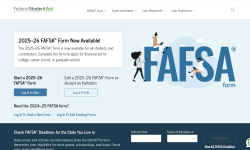Some Detroit schools are going all-remote if not enough teachers want to return to classrooms

This piece was originally published on Chalkbeat Detroit
- Aug. 28, 2020: Deal to avoid Detroit teachers ‘safety’ strike would offer COVID-19 testing, hazard pay
Individual Detroit schools will be given the option of going all-remote to start the year or shifting to online teaching for select grades and subject areas depending on teachers’ willingness to return to the classroom, district superintendent Nikolai Vitti said Monday.
“It’s not a decision directly made by the district,” Vitti said during a district academic subcommittee meeting. “It’s a decision made by teacher preference.”
Last week, school principals started asking teachers if they prefer to teach in person or remotely. Schools will finalize plans and inform parents about learning options by the end of this week, Vitti said. School resumes Sept. 8 for the district’s 51,000 students.
- Michigan coronavirus unemployment, map, curve, COVID-19 updates
- Dashboard: Michigan coronavirus testing numbers, trends, COVID-19 data
- Michigan school reopening tracker: See how your K-12 district is starting the year
“In order to meet the demands of our teachers and address their concerns about being required to return [face-to-face], we gave them the option of selecting [face-to-face] or online,” Vitti said in an email after the subcommittee meeting.
“This has led individual schools within the district to move online at particular grades, subject areas, or the entire school online based on teacher selection for online or [face-to-face].”
If a school building, grade, or subject area goes virtual, students who signed up for face-to-face learning can still access meals or take online courses on campus with support staff providing supervision, Vitti said.
The district is one of a handful of school districts in the region offering a mix of in-person and online learning options. Activist groups and the Detroit Federation of Teachers, the district’s largest union, are pressuring the district to pivot toward a full virtual start to the school year.
Last week, DFT members voted to authorize union leadership to potentially launch a “safety strike,” pushing for all employees to work remotely. Although both parties said they’re making progress on contract negotiations, union leaders could institute a strike if those talks break down. Among the union’s demands are providing hazard pay for teachers working inside school buildings and giving support staff the ability to opt out of in-person work.
DFT vice president Lakia Wilson said the district hasn’t provided information to the union about which individual schools may be going 100% virtual. Wilson estimates that about 10% of union members are interested in returning to the physical classroom. The union represents about 4,000 district employees.
“Our duty is to ensure that their working conditions are secure and fair. We don’t want our members working face-to-face if they don’t have any assurances for their safety,” she said. “We are still in negotiations regarding the reopening, regarding the contract. There has been movement, but there are still a few areas to iron out.”
The shift in allowing schools the choice to start virtually comes because some teachers are fearful of returning to work inside buildings during the COVID pandemic. ’
Vitti said the district remains determined to offer a face-to-face option to provide “equitable access to a free and public education,” and stressed that the federal coronavirus relief funding the district received ensures the district will be able to implement strict COVID-safety protocols where face-to-face learning occurs.
The district is continuing its outreach efforts to families who have yet to pick up a device necessary for remote learning.
In April, the district announced a multi-million dollar technology distribution effort to equip all district students with a device and internet connectivity to bridge the city’s digital divide. Over 32,000 students have picked up a device so far, Vitti said. The district also plans to announce makeup dates this week for families who still need to retrieve a device. They’ll be able to do so through the first week of school.
School staff also plan to make home visits to the roughly 10% to 15% of district families who haven’t filled out a survey asking whether they prefer in-person or online learning. Vitti has said about 80% of parents who have replied selected the online option. Parents will also have the opportunity to change their child’s learning choice every quarter.
Michigan Education Watch
Michigan Education Watch is made possible by generous financial support from:
Subscribe to Michigan Health Watch
See what new members are saying about why they donated to Bridge Michigan:
- “In order for this information to be accurate and unbiased it must be underwritten by its readers, not by special interests.” - Larry S.
- “Not many other media sources report on the topics Bridge does.” - Susan B.
- “Your journalism is outstanding and rare these days.” - Mark S.
If you want to ensure the future of nonpartisan, nonprofit Michigan journalism, please become a member today. You, too, will be asked why you donated and maybe we'll feature your quote next time!





